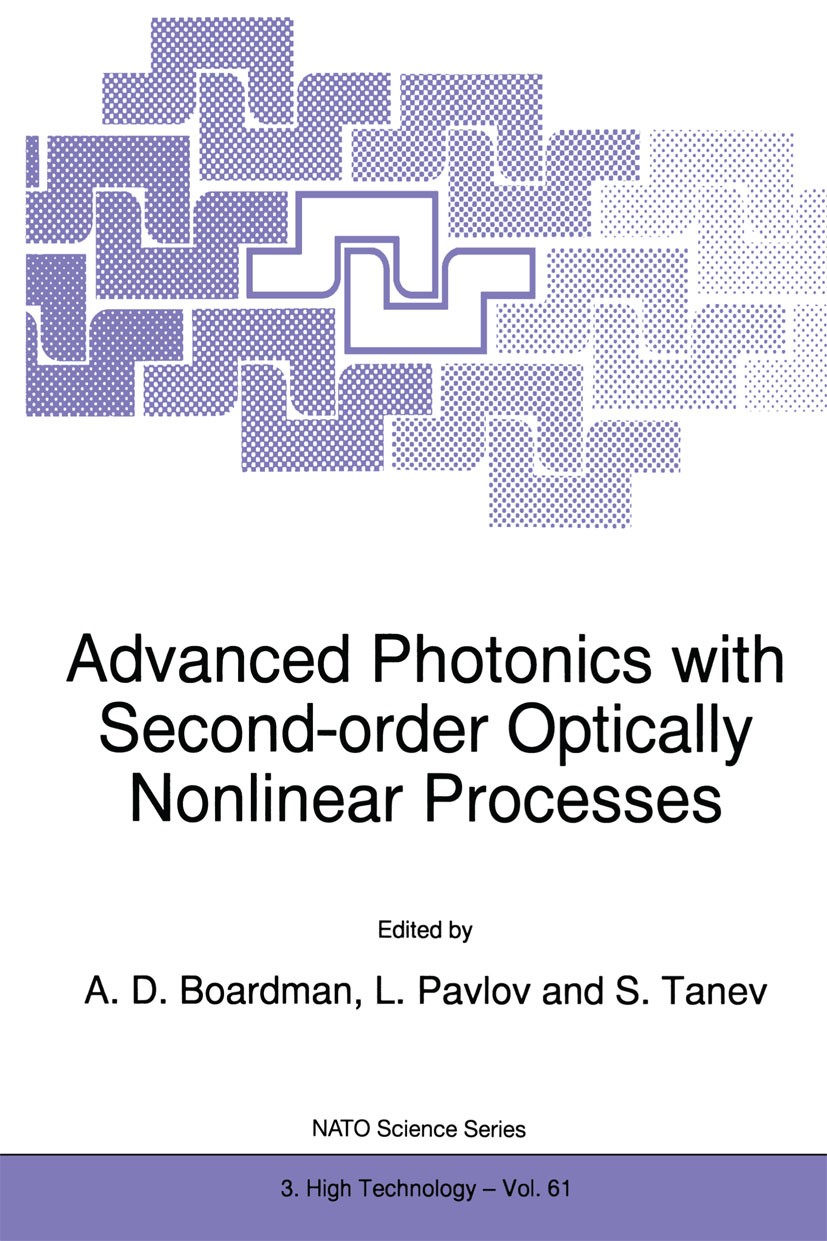| 期刊全称 | Advanced Photonics with Second-Order Optically Nonlinear Processes | | 影响因子2023 | A. D. Boardman,L. Pavlov,S. Tanev | | 视频video | http://file.papertrans.cn/147/146099/146099.mp4 | | 学科分类 | NATO Science Partnership Subseries: 3 | | 图书封面 |  | | 影响因子 | Although it took some time to establish the word, photonics is both widely accepted and used throughout the world and a major area of activity concerns nonlinear materials. In these the nonlinearity mainly arises from second-order or third-order nonlinear optical processes. A restriction is that second-order processes only occur in media that do not possess a centre of symmetry. Optical fibres, on the other hand, being made of silica glass, created by fusing SiO molecules, are made of material with a centre of z symmetry, so the bulk of all processes are governed by third-order nonlinearity. Indeed, optical fibre nonlinearities have been extensively studied for the last thirty years and can be truly hailed as a success story of nonlinear optics. In fact, the fabrication ofsuch fibres, and the exploitation oftheir nonlinearity, is in an advanced stage - not least being their capacity to sustain envelope solitons. What then ofsecond-order nonlinearity? This is also well-known for its connection to second-harmonic generation. It is an immediate concern, however, to understand how waves can mix and conserve both energy and momentum ofthe photons involved. The problem is that the wave v | | Pindex | Book 1998 |
The information of publication is updating

|
|
 |Archiver|手机版|小黑屋|
派博传思国际
( 京公网安备110108008328)
GMT+8, 2025-11-16 17:49
|Archiver|手机版|小黑屋|
派博传思国际
( 京公网安备110108008328)
GMT+8, 2025-11-16 17:49


